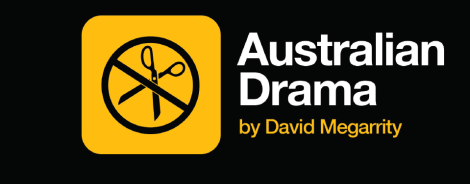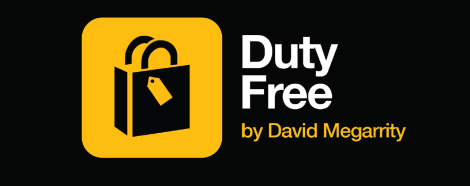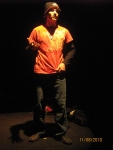Playlab have released a compilation of three of my scripts for large casts of young people. It’s called Destinations. It’s a book, and it’s online. I’ve written (in one case co-written) and directed the pieces, and each production has included music.
Now I find that certain musical choices I’ve made in performances are frozen and embedded in the text. Some choices are pretty straightforward, and others are more experimental. I was keen for the musical sequences in these plays not to be dependent on particular pieces of music, but rather influenced by their character.
In preparing the plays for publication felt I had to frame the function of music in these performances in terms of particular choices, providing options for interpetation rather than ‘instructions for use’
Australian Drama: Found Sounds
In 2008, I wrote a piece called Lines Down, which is a play about a group of students in a university Drama course negotiating script to create a performance. I’ve now rewritten it and retitled the piece Australian Drama, in honour of the pastiches of classic scripts that it’s built around.
Musically I wanted to experiment with a ‘found’ soundtrack. I decided to use a transistor radio, tuned to a local radio station. It was operated by an arm, the owner of which was unseen. The implication was that the arm might have belonged to a cleaner who enters the rehearsal space at night time, inbetween the fictional events depicted onstage. The sound source was diegetic, yet the sound itself from the ‘real world’. I was hoping for happy accidents, and indeed they happened. The ‘real’ audio, broadcast from somewhere nearby, ‘in the now’ I think lent a kind of real-time credence to the experience of the characters. But I could be wrong.
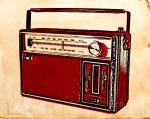 I tuned the radio to 4BH, an easy listening station that apparently plays ‘the greatest music of all time’ which upped the chances of the signal it picked up being familiar tunes or chatty patter. I wasn’t ready for the signal to be completely randomised: any station, any time.
I tuned the radio to 4BH, an easy listening station that apparently plays ‘the greatest music of all time’ which upped the chances of the signal it picked up being familiar tunes or chatty patter. I wasn’t ready for the signal to be completely randomised: any station, any time.
The radio was only active when the stage was empty. The screen showed mundane moving images of empty corridors or night-time car-parks that I shot around the uni campus. Therefore the music had no human referent, and played in the cleared spaces between scenes.
After all the time I’ve spent carefully researching and curating music into drama it gave me a perverse thrill to throw it open to chance. In the performance of Tuesday, November 4, the hand came out, turned the radio on and a familiar acoustic riff pealed out. The lights went down, and the vocalist said “…Hello darkness my old friend..” (Sounds of Silence, Simon and Garfunkel). Tuesday November 11’s show was opened by the “lie la lies” of The Boxer. Elvis’ Presley’s CC Rider, Sherbet’s Howzat and Billy Joel’s I Love You Just The Way You Are and Uptown Girl spoke obliquely to the themes of the play. Even the audio trash of AM radio advertising seemed to attract value when it’s put onstage.
Hearing the news of the day crackling out during a live performance really attunes you to the ephemeral nature of what you’re doing when you’re putting on a show. It’s only there once. And then it’s gone.
Duty Free: Gypsy Swing and Ambient Underscore
In 2010, I created a monologue-based piece about overseas travel experienced by young, middle-class Australians in their identity-forming ‘gap year’. Duty Free. It was deliberately meditative and anticlimactic in structure, though some of the monologues and characters were linked if you looked closely enough. The monologues were broken up by quirky ensemble movement sequences depicting action in airports, on airplanes and in customs. I decided to soundtrack these with Gypsy swing. I’ve loved Quintette du Hot Club de France since I was a teenager, and was lucky enough to see Stephane Grappelli live.
For this show I used Gypsy Swing music, edited very closely to fit with the transitions we designed on the floor. Some vintage, some contemporary. I got the cast to ‘map’ the music visually in whatever way they liked, and to share their ideas about how the music was structured before we really got into choreography. These movements were based in real-life action such as flight attendant safety displays and baggage carousels. No meaningless dance moves here.
Gypsy Swing is energetic, sprightly and virtuosic. It’s simply fun. It gets used by the advertising industry to evoke good times, tinged with nostalgia and class. Here we used it in the sense of ‘song picturisations’ (a term that comes from Bollywood cinema) where pre-existing music is narratively repurposed, or becomes the inspiration for new, micro-stories (often non-verbal/choreographic) inspired by the music itself. It’s enormous fun coming up with these kinds of sequences.
I also used more contemporary pieces, such as Jonsi and Alex’s Happiness (at very low volumes) to underscore certain monologues towards the end of the piece, as if music was ‘invading’ the space as we got closer to the workings of the character’s hearts.
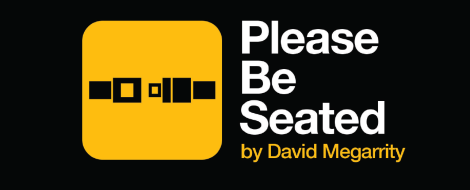
Lifelike. Like life. Take a seat. Let’s talk about love! co-written by Courtney Ammenhauser, Zoe Cobon, Virginia Difrancesco, Laura Duncan, Tahlia Holt, Renee Hunt, Sam Sheldon, Ella Livsey, Christene McPhee, Rebecca Robertson, Hannah Sutherland, Stephanie Tandy and Amy Wilkosz
Please Be Seated: Pop songs and Picturisations
Please Be Seated is one of my favourites. Initially a devised piece, I share the writing credits with the original collaborators. It’s a verbatim, monologue-based piece about falling in and out of love. This one contains some underscore as well as the ‘song-picturisations’ that I included in Duty Free and an earlier, airport-themed script called Gate 38. The chairs that litter rehearsal rooms were repurposed for our production, and started to be used as sort of puppet/set-pieces. They fell in love, danced, broke up, and even gave birth. The chairs themselves, as well as gaining a sort of ‘personality’ also symbolised the absent objects of the monologues.
Drawing from Dennis Potter’s use of songs as ‘chariots of ideas’ we used some hits of the day such as Gotye and Temper Trap tunes alongside other selections – there’s a simple joy inherent to dancing to a pop song played really loud that’s undeniable. In this way music can be a rehearsal room ‘push’, making you all feel a little bit better about devising something in a situation when you’re not quite sure if what you’re doing is going to work.
The rhythms and sections of a pop song can also help you structure a non-verbal scene if you’re all working off the same ‘map’ of it, and visually ‘mapping’ a song (in non-musical language) is a really useful exercise for a cast to engage in. A good pop song can also grease the wheels of the audience’s experience as well. We like hearing and seeing things we’re familiar with.
At some stage in the process it’s important to take away the music and see what you have left – if the best thing about the scene is the song, then you don’t have a scene.
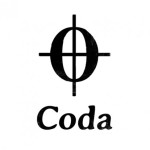 These scripts are for young people to perform, and I’ve built them to be open to their input. The music I’ve included in each one is a ‘serving suggestion’ only, and I’ve made this very clear in the scripts. Like anything fresh, songs can date very quickly. Particularly where pop music is concerned, young people are more likely to be able to contribute useful ideas than an ageing director or drama teacher. It must be noted however, that this relationship goes both ways. A production like this is an opportunity to introduce a cast to older types of music – as long as it’s serving the play rather than personal tastes.
These scripts are for young people to perform, and I’ve built them to be open to their input. The music I’ve included in each one is a ‘serving suggestion’ only, and I’ve made this very clear in the scripts. Like anything fresh, songs can date very quickly. Particularly where pop music is concerned, young people are more likely to be able to contribute useful ideas than an ageing director or drama teacher. It must be noted however, that this relationship goes both ways. A production like this is an opportunity to introduce a cast to older types of music – as long as it’s serving the play rather than personal tastes.
These projects mostly use music to stitch together segments of dramatic action, cover transitions between them and sometimes underscore them. In the rehearsal room, music has been our faithful friend. It’s been there to lend a polish to the unfinished, to shape scenes from the inside, or to dance to when you’ve run out of ideas. It has allowed me to procrastinate with a soundtrack while I’m supposed to be writing the play. Or so I thought. For me, collecting, compiling and curating a potential soundtrack IS a writing exercise.
So these scripts capture writerly and directorial experiments not only with traditional uses of music in western theatre, but also with a pushing outwards to see where its limits lie as a tool for making meaning, looking for ways to tastefully innovate and let music inform on-stage (and on-page) action without subverting the primacy of the spoken word.
Read more here.


